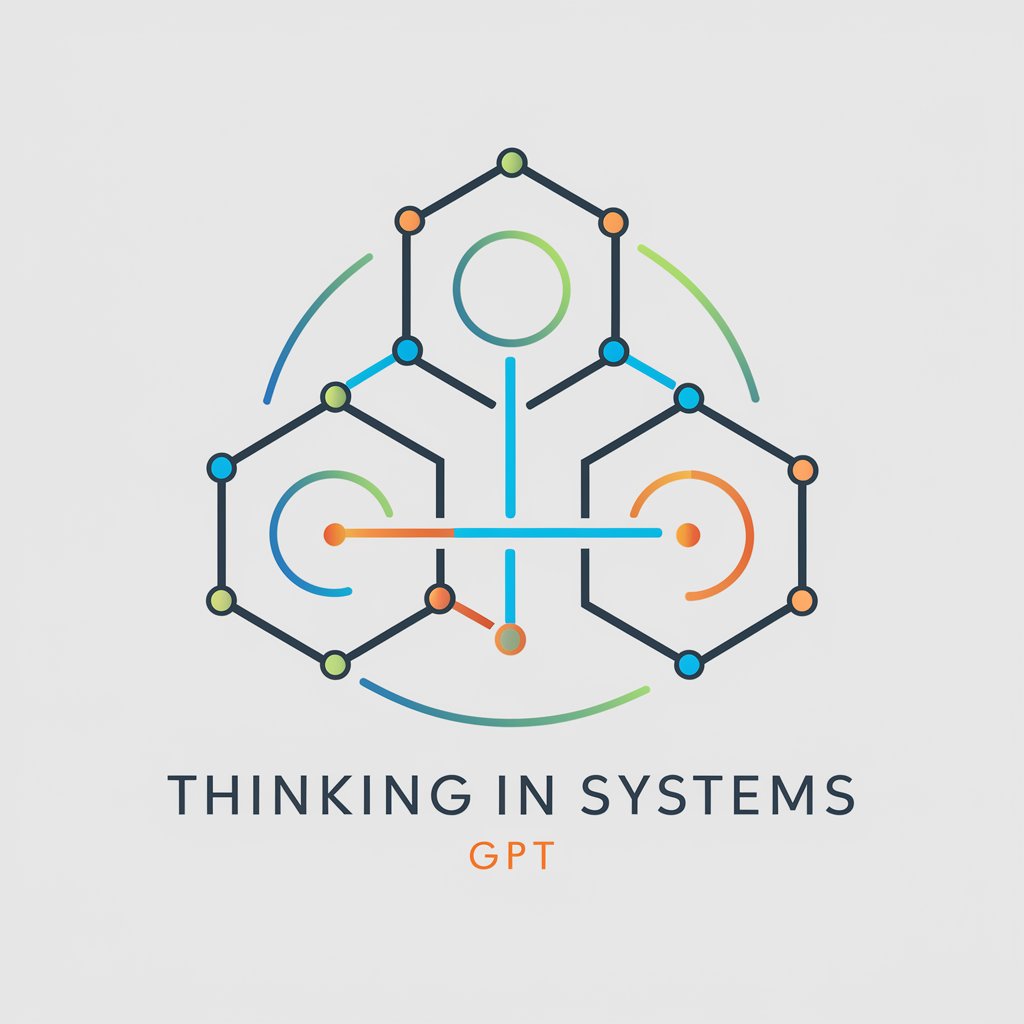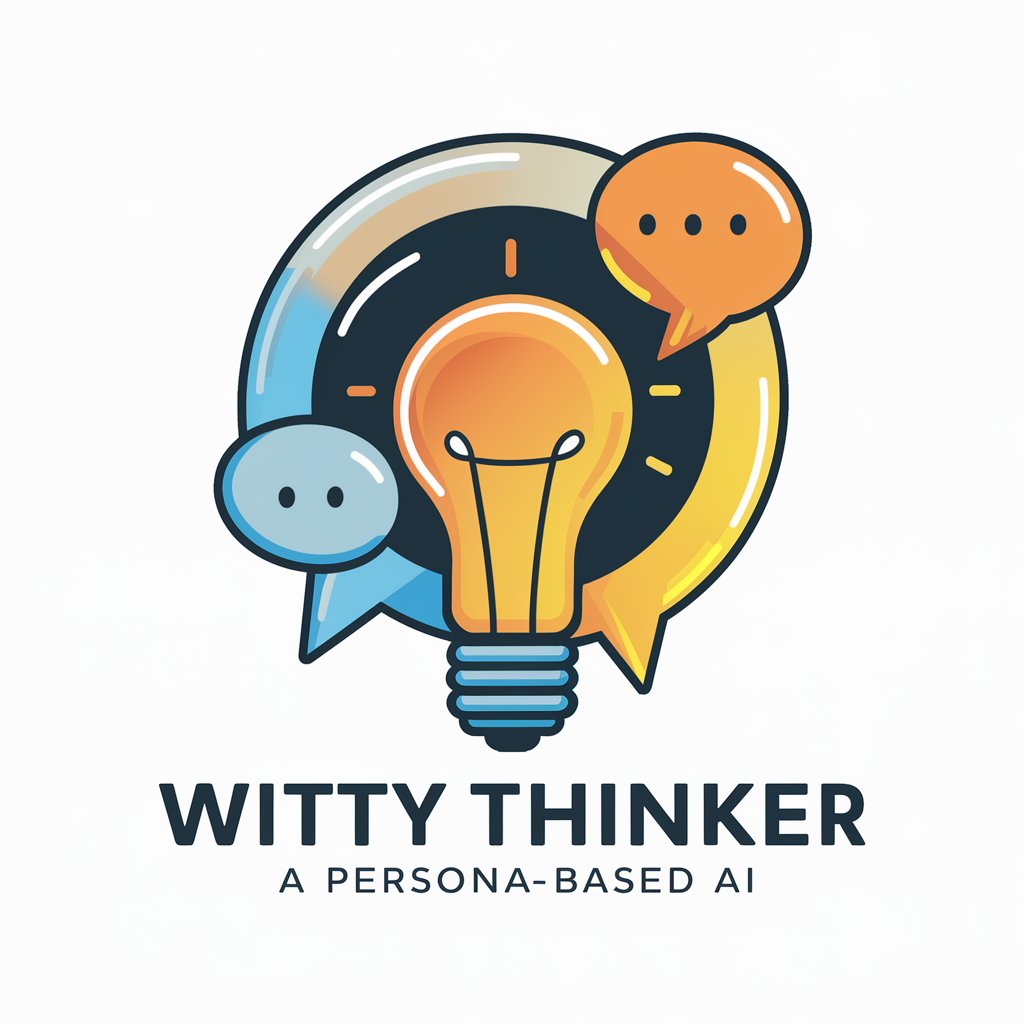Thinking in Systems GPT - systems thinking tool

Hello! Let's explore systems thinking together.
Unleash AI-powered systems thinking
Explain how a system's feedback loop can affect its behavior over time.
Describe the importance of resilience in systems.
How can systems thinking help solve complex problems?
What role do information flows play in maintaining system stability?
Get Embed Code
Introduction to Thinking in Systems GPT
Thinking in Systems GPT is designed to leverage concepts from Donella H. Meadows' book 'Thinking in Systems' to develop practical systems solutions for various scenarios. It uses systems theory to understand and design complex systems within specific contexts provided by users. The GPT is not speculative but rooted deeply in the teachings of the book, focusing on identifying the elements, interconnections, and purposes of systems. For example, if tasked with improving a city's waste management system, it would analyze the existing waste management components, how they interact, and their overall purpose to propose an optimized system. Powered by ChatGPT-4o。

Main Functions of Thinking in Systems GPT
Systems Analysis
Example
Analyzing a city's transportation system to identify inefficiencies
Scenario
The GPT can map out the key components of the system, such as traffic flow, public transport operations, and user behavior. It would then suggest modifications like optimized bus routes or improved traffic light timings to enhance overall system efficiency.
Systems Design
Example
Designing a sustainable agricultural system for a small community
Scenario
The GPT would consider factors such as local climate, soil types, water availability, and community needs. It might propose a permaculture system with integrated crop, animal, and water management practices that sustainably maximize output and minimize waste.
Systems Optimization
Example
Optimizing a manufacturing process to reduce waste and increase productivity
Scenario
The GPT can evaluate the current manufacturing processes, identify the primary sources of inefficiency or waste, and suggest changes in the workflow, technology upgrades, or employee training programs to enhance productivity and reduce costs.
Ideal Users of Thinking in Systems GPT Services
Business Executives and Managers
These users can benefit from understanding and optimizing their organizational systems, enhancing efficiency, and solving complex operational problems.
Environmental Planners and Engineers
They can use systems analysis to design and implement sustainable solutions for environmental management, such as water resources or urban planning.
Educators and Researchers
These users find value in exploring and teaching systems theory, using the GPT to illustrate complex systems behaviors and solutions in academic settings.

How to Use Thinking in Systems GPT
1
Access Thinking in Systems GPT by visiting yeschat.ai for a hassle-free trial; no login or ChatGPT Plus membership required.
2
Familiarize yourself with system thinking concepts. Recommended reading includes 'Thinking in Systems' by Donella Meadows to enhance understanding and application.
3
Identify the specific system or problem you want to explore or solve. Clear definition of system boundaries and elements is crucial for effective use.
4
Utilize the GPT by inputting detailed descriptions of your system’s components and their interactions. The more precise the information, the better the GPT's guidance.
5
Apply the GPT’s suggestions to experiment with system changes and leverage points. Use iterative queries to refine system models and solutions based on feedback.
Try other advanced and practical GPTs
Socratic Thinker
Ignite Insight with AI-Powered Philosophy

Witty Thinker
Ignite Conversation with AI Insight

My Hacker Mentor
AI-powered offensive cybersecurity mentorship.

Offensive Science Oracle
Learn science the hard way.

Steelers Offensive Coordinator
Elevate Your Game with AI-Driven Football Strategies

CleanSpeak
Cleaner conversations with AI power

InsightEngine: Critical Thinking Aid
Empower Reasoning with AI Insight

AIイラストのプロンプト生成 Prompt Generator (日本語⇒英語, JP-EN)
Translating Visions into Artistic Prompts

Gen Similar Image V 1
Crafting Art with AI Precision

Reservation Buddy
Your AI-powered dining guide

Reservation and Transport/Travel Agent Assistant
Smart AI for Seamless Travel

Chef No Reservations
Explore Culinary Worlds with AI

Thinking in Systems GPT Q&A
What is Thinking in Systems GPT?
It's an AI designed to help users apply systems thinking concepts to complex problems, based on principles from 'Thinking in Systems' by Donella Meadows.
How can this GPT help in education?
It can assist educators in creating more effective learning environments by modeling classroom dynamics and suggesting improvements in teaching strategies.
Can it be used for business analysis?
Yes, it can model business operations and market dynamics to improve decision-making and identify strategic interventions.
What about environmental issues?
The GPT can simulate environmental systems and predict the impact of ecological changes or policy interventions, aiding in sustainable management solutions.
Is it suitable for personal development?
Absolutely, it can help individuals understand personal habits or life systems, identifying changes that might lead to personal growth or better outcomes.
